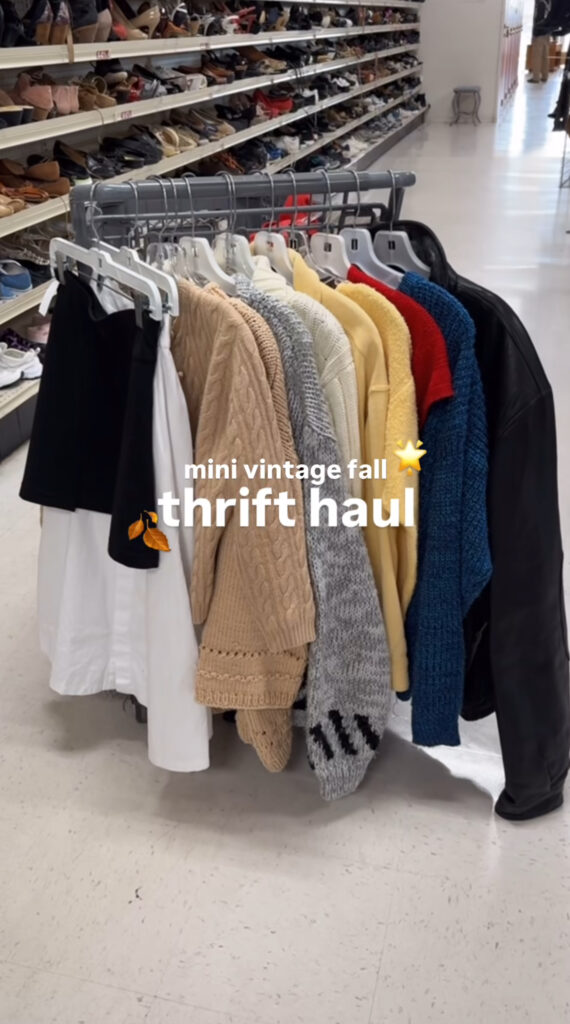
Thrifting has always been my hobby, ever since my mom opened her first thrift store in 2017. So that, after moving to a new place, I still have that hobby as a way to relieve stress.
After spending a working Sunday, I just wanted to go thrifting, thinking that nobody would dedicate themselves in a thrift store on Sunday, so I could have my own space doing what I like. Sitting on the bus, headed to my usual spot, I noticed something surprising when arrived to the bus stop—half the passengers got off, and yes, you read that right, about ten people, all making their way straight to Value Village.
Even more interesting, inside the store, it was packed with people of all ages, from teens to seniors, everyone was pushing carts, eyes locked on the racks, determined to find something special, while everybody supposed to be at home and be a couch potato, as they had to enjoy the last day of weekend, before heading to work tomorrow.
In recent years, thrifting has exploded in popularity, thanks to influencers and social media users sharing their thrift hauls. These videos rack up millions of views, drawing even more people into the thrifting world. The revival of Y2K fashion has also given thrift stores a boost, as clothes once considered out of style are now the prized gems people are hunting for.



Let’s take a trip back in time to the history of thrifting. In the 19th century, thrift stores began opening in Europe and the USA, with the aim to relieve the poor of excess clothing and household items. Over time, thrifting gained popularity, not just as a way to shop but as a way to give back through donations. It became known for being both budget-friendly and sustainability.

According to a report by Value Village, 90 per cent of Canadian consumers have engaged with a thrift store— shopping, donating, or both—an increase from 83 per cent in 2022. There is also noteworthy that 40 per cent of Value Village customers are GenZ, with 60 per cent of this group have quarter of their wardrobe filled with secondhand clothes.

Beyond clothes, eight out of 10 Value Village customers report purchasing non-fabric items, such as household goods or furniture. These numbers highlight the momentum for a more sustainable, economical, and unique approach to shopping.

Putting aside the environmental and economic benefits of thrifting, the rise of the trend has brought some new issues. Many people now visit thrift stores with the goal of turning a profit, buying items and reselling them at much higher prices—especially trendy pieces, which sometimes end up being more expensive than their original retail price. This has led to price increases in many thrift stores, where items meant to be affordable for everyone are now part of a retail game, losing their original purpose.
Additionally, this trend encourages a ‘buy more’ mentality. Consumers feel they are doing the right thing by donating items and clearing out their closets, but many, especially those who favour fast fashion, end up buying more because they believe donating justifies it. This diverts attention from truly sustainable habits, where the focus should be on mindful consumption rather than overbuying.

“Thrifting has changed significantly over the years. I’ve noticed items from fast-fashion brands like Shein and H&M popping up at Value Village, many still with tags and in great condition. But on the flip side, thrifting remains an affordable way to shop, especially for those seeking unique pieces”, said Narci – a vintage shopper.
There is always two sides of a coin. I still support thrifting, support its positive side, we can’t decline the sustainable and environmental influence that it positively brings out. However, it’s still important to approach thrifting with a conscious mindset, make sure that we’re not doing the completely contrary things, wasting and overconsumption. By focusing on buying only what we need and giving thought to the long-term use of secondhand goods, we can enjoy the benefits of thrifting while minimizing any negative effects.
Let me know what you think!
Leave a Reply